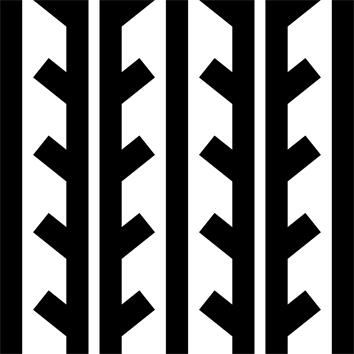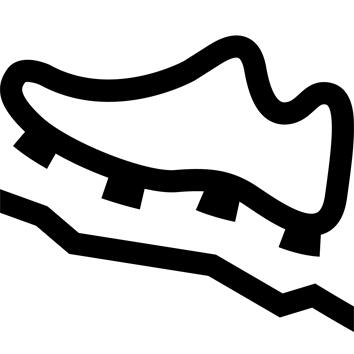Grippy soles on natural trails
The design of the sole has been the subject of extensive research in our laboratories. We chose a specific rubber formulation to optimize grip and adhesion. As needs vary, we systematically seek the best compromise for use on soft natural trails such as forest paths.
Designed for use on natural trails
Our hiking boots are designed for use on natural trails. In fact, we select and test the sole and upper components of our shoes to ensure they are ideally suited to hiking on soft trails (such as earthy forest paths) or mineral trails (such as rocky coastal paths). Use on roads (asphalt) may accelerate wear and cause discomfort. They are not suitable for mountain hiking.
Tested for optimum resistance
Laboratory tests are also carried out to validate the following elements: eyelet and strap pull-off, gluing, toxicology, UV resistance, abrasion of sole and upper components, accelerated ageing. These tests enable us to improve the quality of our products and prevent premature wear of our hiking boots.
How to care for your leather shoes
After your hikes, we recommend :
- Leave to dry away from a source of heat
- On well-dried leather, brush vigorously with a hard brush to remove mud and dirt
- Use a crepe or nubuck brush to remove stains
- If stains remain, clean with a brush and a little lukewarm water
- Leave to dry
- Brush again with a hard brush
- Spray with waterproofing : this will give shine to the leather and liveliness to the color.
How to choose the right hiking boot size?
Try on both shoes, standing up, with the socks used for hiking. Try several models and sizes if necessary. Two points of comfort should be checked:
- heel support
- forefoot support
Avoid compression points when trying on shoes. Don't hesitate to walk around to test comfort. Use your shoes progressively during your first hikes to get them to fit you.
How to choose the right combination and size for your hiking socks?
There are many causes of blisters when hiking: rubbing, a fold in the sock, dampness, wrong sock size. That's why it's important to choose the right sock size and material for your footwear.
Choose a sock size that's right for your foot, to avoid any extra folds: either because it's too big and there's too much material around the foot, or because it's too small and is pulled towards the inside of the shoe.
Which material and which pair of socks go with the NH500 shoe?
Moisture has to be managed in the best possible way during practice: perspiration is often unavoidable. The NH500 shoe is breathable, and will wick away moisture from your perspiration. So you need to choose a lightweight, breathable sock, too. You'll want to choose Hike 100 low or mid socks. They contain moisture-absorbing cotton and have a loop construction that wicks moisture away from your feet. High enough to protect your ankle from the shoe.






